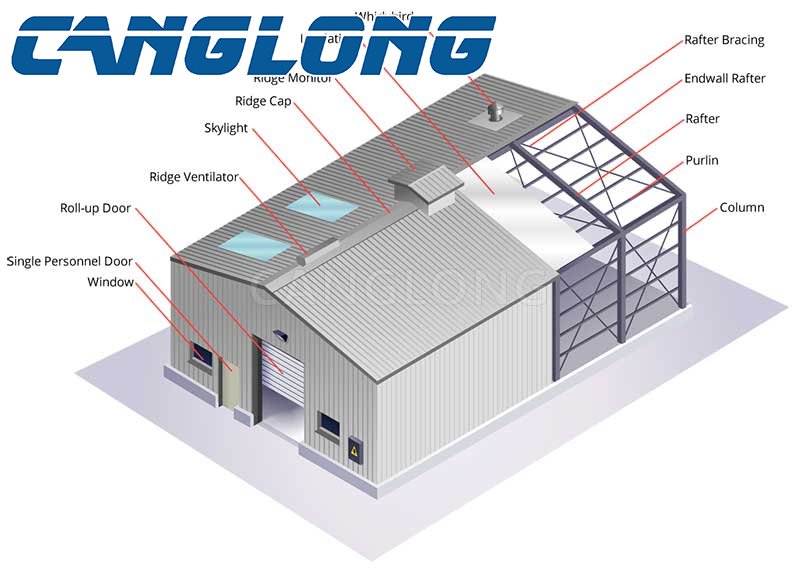Design principles and advantages of warehouse steel frame structure
As an important form of modern storage building, the design principles and advantages of warehouse steel frame structure play a key role in improving storage efficiency, enhancing building safety and economy. This article will conduct an in-depth discussion from three aspects: design principles, structural advantages and practical applications.

Design principles
The design of warehouse steel frame structure first follows the basic principles of structural mechanics to ensure that the structure can remain stable and safe under various loads. During the design process, engineers will comprehensively consider the stress conditions of the structure, the strength and stability of the materials, and the specific use requirements of the warehouse. Through precise mechanical calculations and simulation analysis, select appropriate cross-sectional shapes and sizes, such as I-shaped, H-shaped or tubular sections, to ensure that the structure has sufficient bearing capacity and stiffness.
At the same time, the design of the steel structure frame also needs to consider the connection method of the node. The node is the key part of the steel structure to transfer loads, and its stiffness and strength directly affect the stability and safety of the overall structure. Therefore, the node connection often adopts high-strength connection methods such as welding and bolting to ensure that the node is not damaged under stress.
Structural advantages
Warehouse steel frame structure has significant advantages over traditional structural forms:
1. Short construction period: Most steel structure components are prefabricated in the factory, and only hoisting, splicing and welding are required on site, which greatly shortens the construction period and is conducive to rapid response to market demand.
2. Strong bearing capacity: Steel has high strength and good plasticity and toughness, which enables steel structure warehouses to carry larger loads under the same load-bearing conditions, ensuring the stability and safety of the warehouse.
3. High space utilization: The internal space layout of the steel structure warehouse is flexible, and there is no need to set up too many support columns like traditional structures, thereby increasing the use area and storage efficiency of the warehouse.
4. Durability and low maintenance cost: Steel structure has good corrosion resistance and durability. After proper treatment, it can effectively prevent rust and corrosion and reduce maintenance costs. At the same time, the maintenance and transformation of steel structure is relatively easy, which extends the service life of the warehouse.
5. Environmental protection and sustainable development: Steel structure materials can be recycled and reused, which is in line with the concept of sustainable development. In addition, the steel structure warehouse generates less sand and dust during construction, and the noise pollution is relatively low, which is conducive to environmental protection.

Practical application
Warehouse steel frame structure has been widely used in many fields such as logistics, manufacturing, agriculture, etc. Especially in large logistics centers and storage bases, steel structure warehouses have become the first choice for their high efficiency, safety and economy. Through reasonable structural design and meticulous construction management, the warehouse steel frame structure can give full play to its advantages and provide strong support for the company's warehousing and logistics operations.
In summary, the warehouse steel frame structure occupies an important position in modern storage buildings with its unique design principles and significant structural advantages. With the continuous advancement of technology and the continuous development of the market, the warehouse steel frame structure will continue to play its important role and contribute to the company's warehousing and logistics business.






